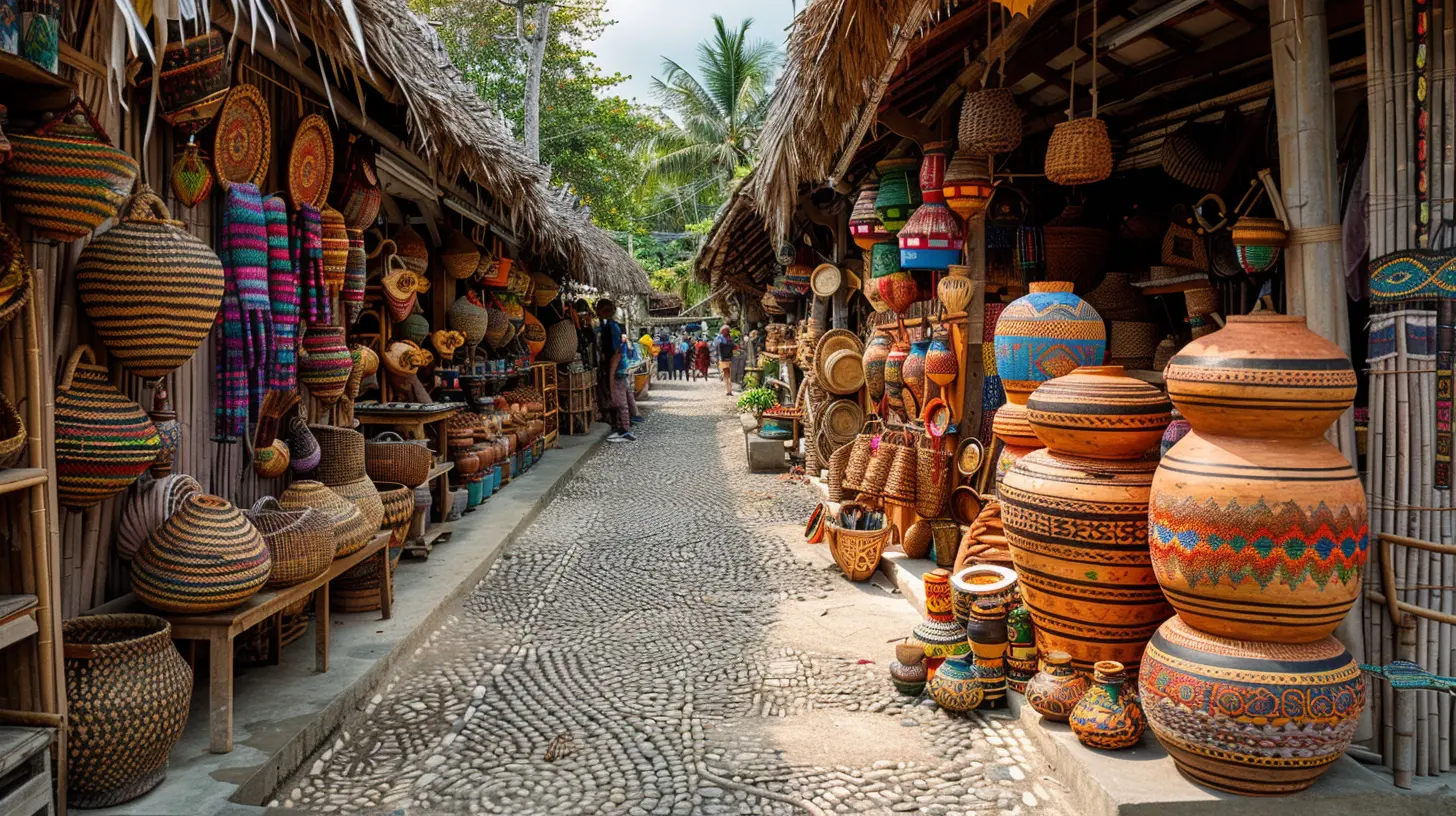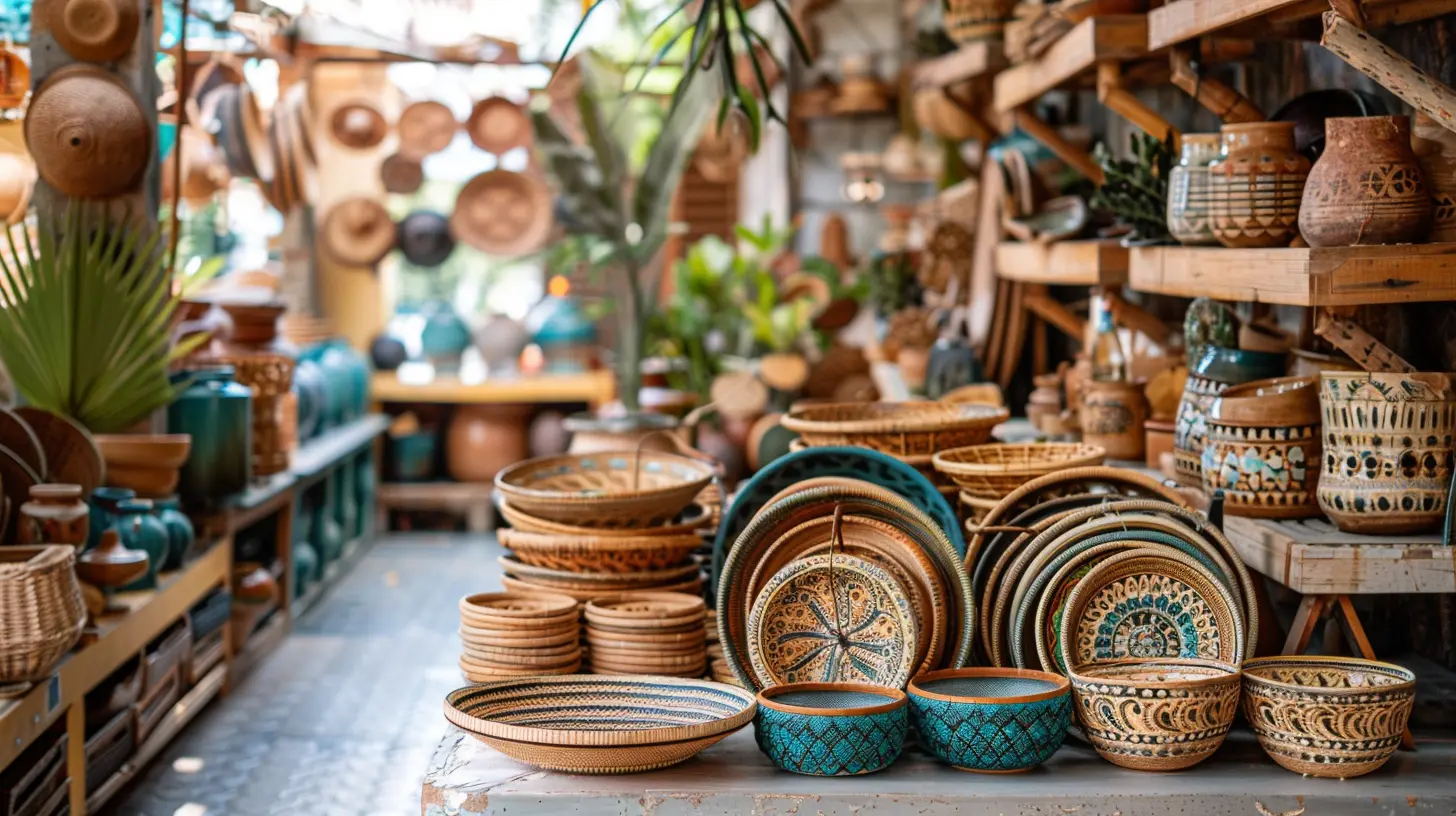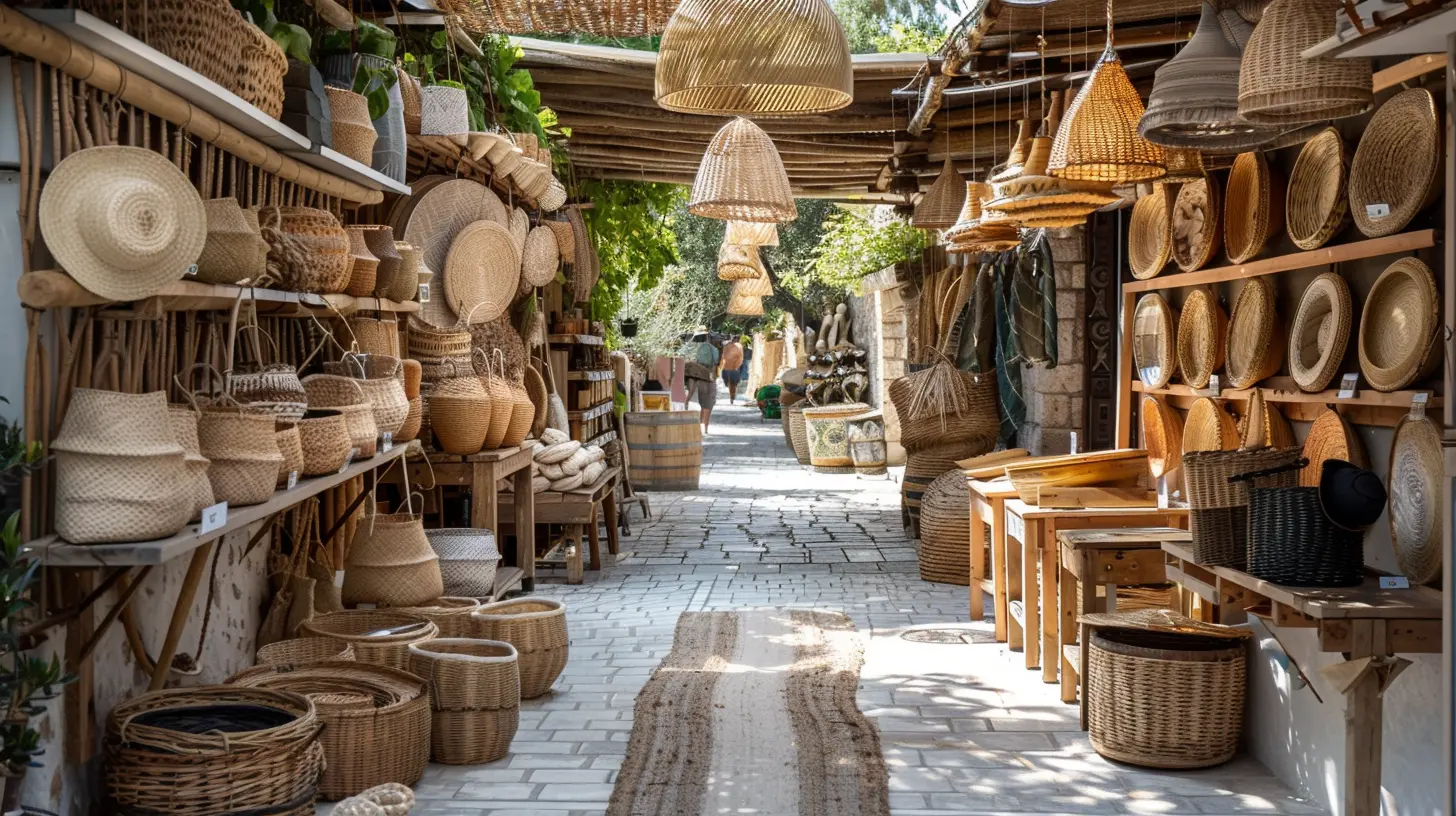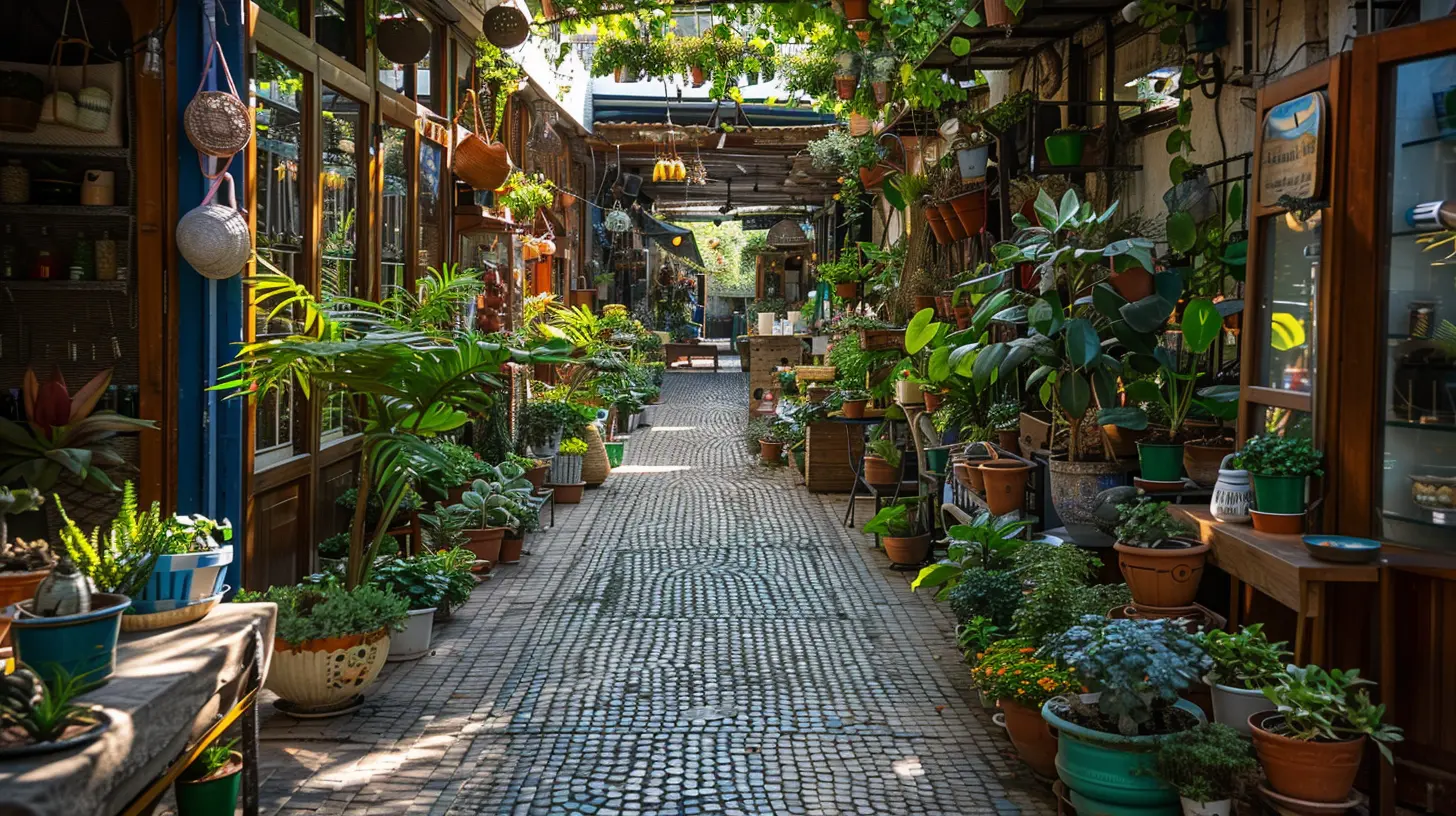The Ultimate Guide to Eco-Friendly Finds in Local Markets
31 July 2025
If you’re someone who cares about the planet and loves browsing through local markets, then you’re in for a treat. This is your go-to guide for finding eco-friendly treasures in bustling local markets around the world. Whether you're strolling through a seaside bazaar, a mountain-town flea market, or a colorful city square, there's a good chance you’ll stumble upon something green (and no, we don’t just mean leafy veggies).
Eco-friendly shopping at local markets isn’t just about reusable bags or skipping plastic—it's a lifestyle. It’s about supporting small-scale artisans, reducing waste, and making purchasing decisions that actually do something good for our environment.
So grab your tote bag, lace up your walking shoes, and let’s dive into the nitty-gritty of how to make the most of your eco-conscious shopping at local markets, no matter where you are in the world.
Why Local Markets Are a Treasure Trove for Eco-Friendly Products
Think of local markets as the beating heart of a community. They’re raw, real, and filled with culture. But they’re also a goldmine for products that are kinder to the planet.When you buy from local vendors, you're cutting out the middleman—and the carbon footprint that comes with long supply chains. Many of these market vendors grow, make, or craft their products locally. That means fresher produce, handmade items, and fewer emissions.
And let’s be real—shopping in a market tends to be a lot more fun than clicking "Add to Cart" on a faceless website.
What to Look For: Eco-Friendly Finds That Make a Difference
Walking into a local market can be a little overwhelming. There’s a lot going on—vendors shouting prices, smells wafting through the air, and colors popping from every direction.Here’s how to spot the eco-friendly gems amidst the chaos:
1. Organic and Local Produce
Let’s start with the obvious. Fruits. Veggies. Herbs. When it's grown locally and organically, it's not just healthier for you—it’s way better for the planet.Local produce means:
- Less transportation
- Fewer preservatives
- Support for small-scale farmers
Pro tip: Bring your own cloth produce bags to ditch the plastic.
2. Naturally Handcrafted Goods
You’ll find artisans selling everything from candles and soaps to textiles and home décor. The trick? Look for items made from sustainable materials like bamboo, recycled paper, organic cotton, or jute.Many of these crafters use age-old techniques passed down generations—which also means fewer machines and less energy used.
3. Zero-Waste and Low-Waste Alternatives
Markets today are catching onto the green wave. Look for stalls selling:- Beeswax wraps
- Bamboo toothbrushes
- Refillable containers
- Stainless steel straws
- Bulk goods (bring your own jars!)
You’ll be surprised how many low-waste goodies you can snag if you keep your eyes peeled.
4. Upcycled and Repurposed Items
Some of the coolest finds in a market are the ones that have lived a past life. Think bags made from bicycle tires, wallets crafted from old denim, or coasters made out of wine corks.These upcycled treasures reduce waste and show off some serious creativity.
5. Vintage and Second-Hand Fashion
Fast fashion? Hard pass. Markets are often full of unique vintage clothing stalls that carry timeless pieces—and buying pre-loved clothes helps reduce textile waste.If you’re lucky, you’ll find that one denim jacket that still has stories stitched into the seams.
How to Become a Savvy Eco-Shopper
Ready to turn your shopping trip into a planet-saving mission? Here’s how to make your next local market haul as green as possible:Bring Your Own Gear
Sounds simple, but it’s a big deal. Always carry:- Reusable bags
- Produce bags
- Containers for food
- Your own cutlery and straw set
This way, you’re not relying on single-use plastics.
Ask Questions
Don’t be shy—talk to the vendors. Ask where the product was made or how it was grown. Most sellers are proud of their goods and love chatting about their craft.Questions you can ask:
- “Is this locally sourced?”
- “What material is this made from?”
- “Do you use any chemicals or dyes?”
Buy in Bulk When Possible
If there’s a stall with nuts, grains, tea, or spices sold by weight—you're in business. Bring your jars or cloth bags and stock up. It’s cheaper, greener, and way more satisfying.Skip the Fluff
Avoid overly packaged products or anything that screams “mass-produced.” Markets should be personal—if it’s wrapped in layers of plastic or looks suspiciously uniform, trust your gut and move on.
Best Types of Eco-Friendly Stalls to Seek Out
Now let’s break it down market-style. Here's the real MVP list of stalls that typically carry eco-friendly options:Farmers Markets
The OG of eco-shopping. You’ll find seasonal fruits, veggies, homemade jams, and fresh honey. Look for organic certification if you're after that extra authenticity.Artisanal Craft Stalls
Handmade? Check. Locally sourced materials? Check. Supporting an actual human rather than a mega-corp? Triple check.Eco-Beauty Booths
Eco-friendly skincare and haircare are booming. Look for:- Solid shampoo/conditioner bars
- Soaps made with essential oils
- Natural deodorants in compostable packaging
Health and Wellness Vendors
These are the spots doling out herbal teas, dried herbs, tinctures, and natural remedies. Many are rooted in traditional medicine and made with love and intention.Food & Snack Stalls
Freshly made wraps, smoothies, and baked goods often use local ingredients. Bonus points if they serve everything in compostable or reusable containers.Global Hotspots for Eco-Friendly Market Finds
Just to spice things up, here are a few market hotspots around the globe where eco-conscious shopping is the name of the game.1. Ubud Art Market, Bali, Indonesia
Known for its handmade crafts, rattan bags, and natural beauty products, Ubud’s market scene is a haven for green travelers.2. Marché Biologique des Batignolles, Paris, France
This organic market is perfect for picking up fresh produce, eco-friendly cheeses, and artisanal bread—all locally sourced.3. Mercado El 100, Mexico City, Mexico
Focused exclusively on local and organic goods. You’ll find everything from cruelty-free cosmetics to organic hot sauces.4. The Green Market, Cape Town, South Africa
A beautiful mix of ethical fashion, eco-jewelry, and sustainably made homeware.5. Byron Community Market, Byron Bay, Australia
From hemp clothing to organic skincare and handmade surf gear, it's an eco-lover’s dream.Common Red Flags to Watch Out For
Not everything labeled "eco" actually is eco-friendly. Watch out for:- Greenwashing: Buzzwords like “green,” “natural,” or “eco” mean nothing without context.
- Plastic Overload: If a “sustainable” product is wrapped in three layers of plastic… that’s just irony at its worst.
- Too Perfect to Be Handmade: High uniformity often hints at mass production.
When in doubt, ask.
Final Thoughts: It’s a Journey, Not a Destination
Eco-friendly shopping isn’t about being perfect—it’s about making conscious choices that add up over time. Local markets can be your best ally on that journey. They’re vibrant, soulful, and filled with potential for positive impact.Every dollar you spend is a vote for the kind of world you want to live in. So next time you’re wandering through a local market, remember—you’re not just shopping, you’re shaping the future.
Happy market hopping, planet warrior
all images in this post were generated using AI tools
Category:
Local MarketsAuthor:

Winona Newman
Discussion
rate this article
2 comments
June Sawyer
Who knew shopping could save the planet? Dive into local markets where the only 'plastic' you'll find is a friendly smile! Join the eco-revolution one tote bag at a time—because the only thing greener than your shopping habits should be your kale!
October 27, 2025 at 5:44 AM
Pilar McPhail
This guide highlights sustainable shopping practices, showcasing local markets' unique offerings and their positive impact on the environment and community.
August 1, 2025 at 4:08 PM

Winona Newman
Thank you! I'm glad you found the guide resonant. Supporting local markets not only promotes sustainability but also fosters community connections. Happy eco-friendly shopping!


